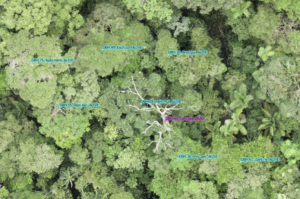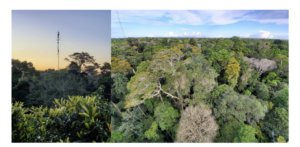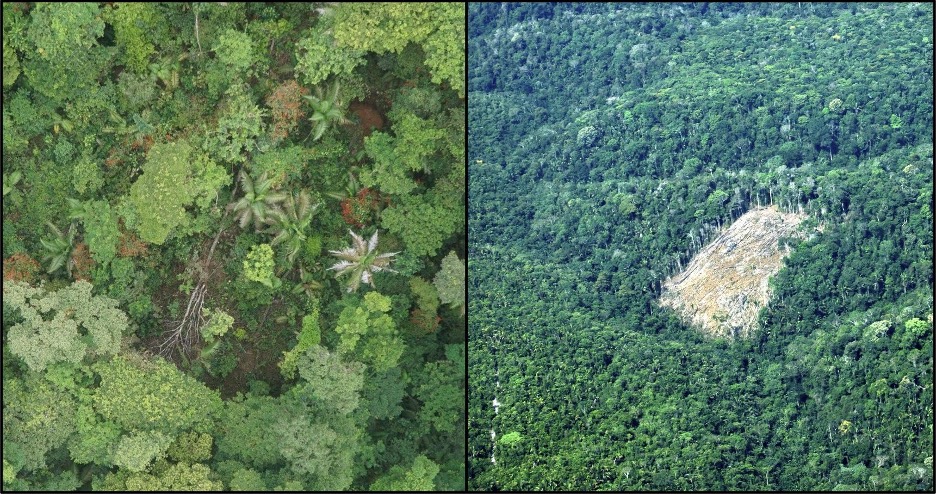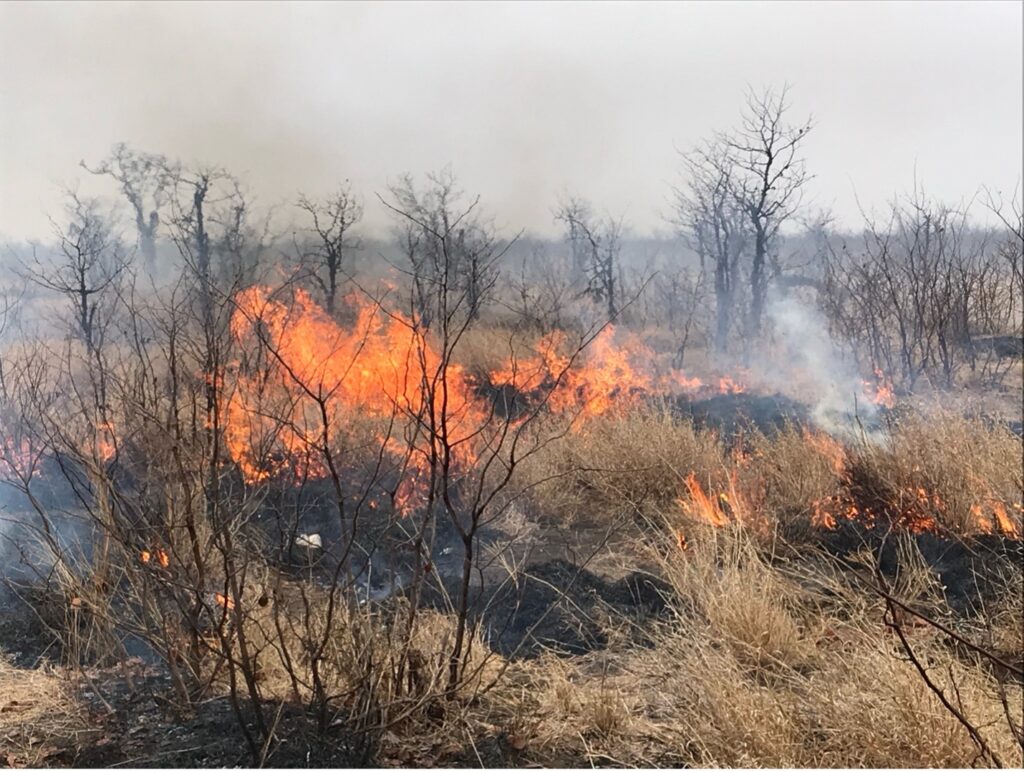Forest scientists evaluated the influence of crown exposure to light, growth rates, tree size and species wood density in the mortality of canopy trees in the Amazon

Canopy trees at the Amacayacu Forest Dynamics plot seen from a drone image. Location of some canopy trees with their trunk size (diameter at breast height-DBH, cm), species abbreviation and survival status are shown for reference. A standing dead tree of Caryocar glabrum (Caryocaraceae, purple dot) stands out from the canopy.
The Science
Tree mortality influences forest carbon dynamics and composition. However, despite the ecosystem importance of tree mortality, we still don’t clearly understand the factors that influence it. Forest ecologists evaluated the role of crown exposure to light, trunk size, growth rates and species wood density in the mortality of 984 canopy trees in the Amacayacu Forest Dynamics plot, northwestern Amazon. Researchers found that the probability of tree death decreased for low wood density species as trees have higher proportion of their crowns exposed to light and grew more than their species average. On the contrary, high wood density species were slightly more prone to die when their crowns were more exposed to light.
The Impact
These results underscore the varied tree responses to specific local conditions. The inclusion of life history strategies (e.g., proxied by wood density), when predicting forest demography under vegetation dynamic models can help to reduce the uncertainty of forest outcomes. Future research should focus on better integration between remote and ground-based data to improve the understanding of tree mortality.
Summary
Understanding the factors that influence tree mortality is a research priority to predict forest responses to global change. In this study, researchers evaluated the role of light exposure, trunk size, growth rates and species wood density in the mortality of 984 canopy trees in the Amacayacu Forest Dynamics Plot, northwestern Amazon. Light availability was measured as the proportion of crown exposed to sunlight; a new metric that relates the vertical exposed crown area over the potential crown area, and that was derived from the integration of drone photogrammetry and ground-based data. The research found that the probability of death at changing light conditions varied with species wood density; trees of low wood density were less prone to die when their crowns were more exposed to sunlight, whereas trees of high wood density species were slightly more prone to die at the same light conditions. This result highlights the role of life history strategies, proxied by the species wood density, in shaping tree survival at contrasting light conditions; and demonstrates the importance of the inclusion of plant functional types in vegetation dynamic models aiming to predict forest demography under ongoing global changes.
Principal Investigators
Luisa F. Gómez-Correa, MSc.
Smithsonian Tropical Research Institute, Panamá
luifgomezcor@unal.edu.co
Daniel Zuleta, Ph.D.
Forest Global Earth Observatory
Smithsonian Tropical Research Institute, Washington, DC
dfzuleta@gmail.com
Program Manager
Brian Benscoter
U.S. Department of Energy, Biological and Environmental Research (SC-33)
Environmental System Science
brian.benscoter@science.doe.gov
Funding
This project was supported by MinCiencias “Convocatoria 891 2020” and by the Next Generation Ecosystem Experiments–Tropics, funded by the Office of Biological and Environmental Research (BER) within the U.S. Department of Energy’s (DOE) Office of Science. Ground-based data collection was supported by the Forest Global Earth Observatory (ForestGEO) of the Smithsonian Institution. Drone imagery were collected during the 9th Regional SilvaCarbon/GFOI Workshop on Forest Monitoring.
References
Gómez-Correa, L, F., et al. “Canopy tree mortality depends on the proportion of crown exposed to sunlight, but this effect varies with species wood density.” Biotropica, 00, 1–12. https://doi.org/10.1111/btp.13258




